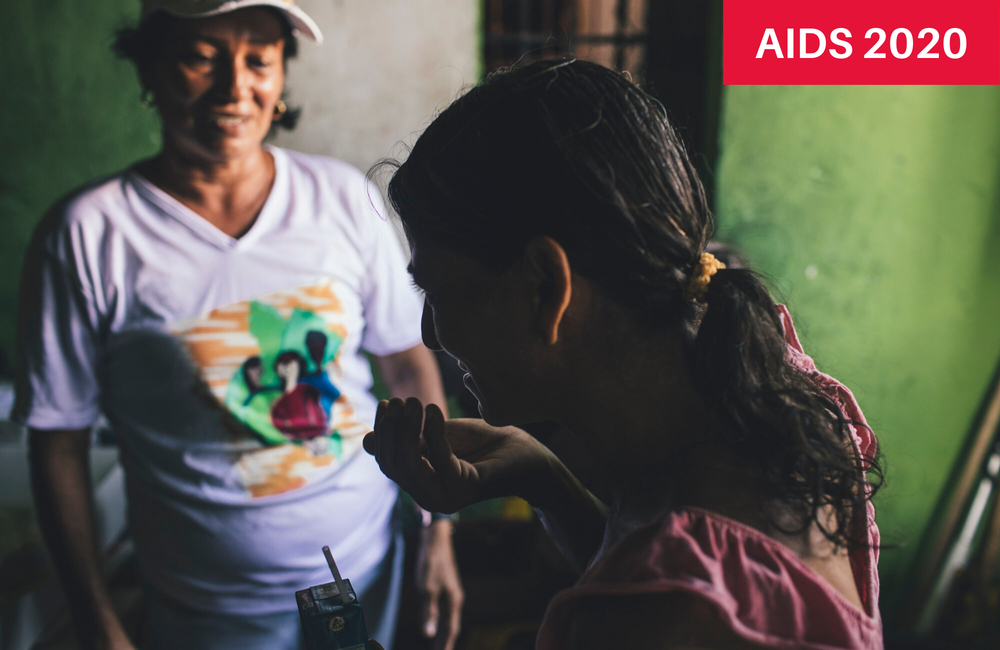
Data from six Latin American countries show that the risk of opportunistic infections remains, even after the long-term use of antiretroviral therapy by people living with HIV. Dr Isaac Nuñez-Saavedra from the International Institute of Medical Sciences and Nutrition in Mexico City presented the findings at the 23rd International AIDS Conference (AIDS 2020: Virtual) this week.
Previous studies in the region have demonstrated a high prevalence of opportunistic infections among people with low CD4 cell counts and of late HIV testing, confirming the well documented associations between a weakened immunity and opportunistic infections.
However, another Latin American study found that the median time to diagnosis of cryptococcal meningitis after starting antiretroviral therapy was two years. This surprising result led researchers to question whether other opportunistic infections could emerge so late, despite antiretroviral therapy.
Dr Nuñez-Saavedra and his colleagues explored the incidence of late-onset opportunistic infections and their risk factors. They defined the term late-onset as after six months of starting antiretroviral therapy.
The participants were all adults with HIV who were enrolled and took antiretroviral therapy for the first time from 2001 to 2015 in seven clinics in Argentina, Brazil, Chile, Honduras, Peru and Mexico, providing data to the Caribbean, Central and South America network for HIV epidemiology, or CCASAnet. People for whom it was impossible to document whether or not they had ever developed AIDS prior to their participation were excluded from the analysis, as were those who had died or been lost to follow-up during the first six months after starting antiretroviral therapy.
A total of 8776 participants were included in the analysis. Gender distribution among them was 77% male (47% men who have sex with men) and 23% female. Those who had a late-onset opportunistic infection had a shorter median follow-up than those who did not (2.5 years [1.1-4.9] vs 3.8 years [1.9-6.8], respectively).
Out of the 8776 participants, 2391 (27%) had at least one study outcome: 987 were lost to follow-up, 505 died, and 899 people had a late-onset opportunistic infection. One quarter of those with a late-onset opportunistic infection died (these deaths were not included in the 505 already mentioned).
The researchers calculated that five years after enrolment in care, they would expect 8.1% of patients to have a late-onset opportunistic infection, 7.1% to be lost to follow-up and 4.2% to die. Opportunistic infections were the predominant events in the first six years of follow-up, while loss to follow-up became more common after this.
The most common infections were:
- Pulmonary tuberculosis in 361 (40%) participants – by far the most prevalent.
- Oesophageal candidiasis in 98 (13%) participants.
- Pneumocystis pneumonia in 92 (10%).
- Herpes simplex of over one-month duration in 70 (7.8%) participants.
- Disseminated candidiasis in 66 (7.3%) participants.
The following factors were significantly associated with a higher risk of developing late-onset opportunistic infections:
- Female gender.
- Younger age at the start of antiretroviral therapy, while older age conferred a decreased risk.
- The CD4 cell count when starting antiretroviral therapy: the lower, the higher risk for a late-onset opportunistic infection (while the higher, the lower risk of infection).
- Having an AIDS-defining event during the first six months of antiretroviral therapy.
- Starting antiretroviral therapy in the earlier period of the study, from 2005 to 2010, as compared to the second one, from 2010 to 2015.
Dr Nuñez-Saavedra concluded that in Latin America, opportunistic infections remain common, despite the long-term use of antiretroviral therapy, and recommended closer monitoring for younger and/or female patients starting antiretroviral therapy, as well as for patients starting with low CD4 cell counts. He added that the development of a late-onset of an opportunistic infection may be due to virologic failure and/or poor adherence, which warrants further investigation.
This study is an important contribution to filling the gap of knowledge on the HIV epidemic in Latin America and other resource-limited settings.
Nuñez-Saavedra I et al. Late-onset opportunistic infections while on ART in Latin America. 23rd International AIDS Conference, abstract OAB0202, 2020.
Full image credit: Health worker attends to TB patient/Trabajadores de salud atienden a paciente de tuberculosis. Pan American Health Organization PAHO. Available at www.flickr.com/photos/pahowho/23693905694/in/album-72157663292749541/ under a Creative Commons licence CC BY-NC 2.0.
